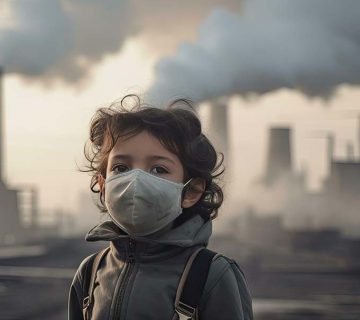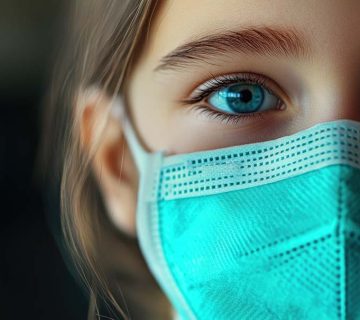Introduction
Imagine this: your 8- or 9-year-old child, still playing with toys and watching cartoons, suddenly begins showing signs of puberty. Body odor, mood swings, breast development, facial hair, growth spurts—it all seems to arrive too soon. You may feel unprepared, unsure, even alarmed. And most of all, you may wonder: What does this mean for my child’s emotional well-being?
Early puberty—also known as precocious or advanced puberty—is increasingly common. While traditionally puberty began around age 11 or 12, many children now show signs between ages 7 and 10. And though the physical changes may be medically “normal,” the emotional and social impact can be profound.
This paper explores what early puberty is, why it’s happening earlier, how it affects children psychologically and socially, and how parents can offer the support, education, and reassurance their kids need to navigate this confusing time.
What Is Early Puberty?
Early puberty refers to the onset of physical changes associated with adolescence before age 8 in girls and before age 9 in boys. These changes include:
- In girls: breast development, pubic or underarm hair, growth spurts, acne, body odor, and early menstruation
- In boys: enlarged testicles, pubic or facial hair, deepening voice, growth spurts, acne, and body odor
In some cases, early puberty is caused by underlying medical issues and requires evaluation. In many others, it’s idiopathic—meaning it occurs without a known cause but still follows the body’s natural hormonal patterns.
Why Is Puberty Starting Earlier?
Researchers suggest several contributing factors to the downward shift in puberty onset:
- Higher body weight and increased BMI: Excess body fat influences hormones like leptin, which can trigger early maturation.
- Environmental exposures: Endocrine-disrupting chemicals (like BPA) found in plastics, personal care products, and food packaging may interfere with hormone regulation.
- Stress and trauma: Chronic stress, including family instability or early exposure to adult topics, may accelerate biological development.
- Improved nutrition and health: Better general health conditions compared to past generations may contribute to earlier growth patterns.
While some of these factors are beyond parental control, understanding them can help contextualize what’s happening.
The Emotional Impact of Early Puberty
Early physical changes don’t always align with cognitive or emotional readiness. A child going through puberty at age 8 or 9 may feel frightened, embarrassed, or confused. They may not have the words to express their discomfort, and peers may not understand what they’re going through.
Key emotional and social challenges include:
- Body Shame and Confusion
A girl whose body is developing breasts in third grade may feel awkward or try to hide under baggy clothes. A boy who grows facial hair while still playing with LEGOs may feel out of place.
Without proper guidance, children may internalize embarrassment or confusion as shame.
- Isolation or Teasing
Being physically different from peers can lead to bullying, social exclusion, or unwanted attention. This is especially difficult if children have no peers to relate to.
- Behavioral Mismatch
Adults and teachers may unconsciously expect more emotional maturity from a child who looks older—even though their brain is still wired for play, not pressure.
- Risk of Mental Health Issues
Children who experience early puberty are statistically more likely to face anxiety, depression, eating disorders, and risk-taking behaviors later on—especially if they don’t feel emotionally supported.
How Parents Can Help
The good news: with the right tools, early puberty can be a period of learning, empowerment, and resilience. Here’s how parents can guide their children through it.
- Start the Conversation Early—Before They Need It
Don’t wait for your child to ask questions. Begin age-appropriate conversations about bodies, growth, and feelings early and often. Use books, diagrams, or videos to explain changes in a neutral, positive way.
Say:
- “Everyone’s body grows in its own time. Some people start earlier, some later—it’s all okay.”
- “Puberty just means your body is growing stronger and getting ready for new things. But you’re still a kid—and that’s great.”
Normalize the process, emphasize body respect, and remind them they are not alone.
- Keep Home a Safe Emotional Space
Make it clear that no question is too awkward, no feeling too silly. Encourage open dialogue about body changes, emotions, friendships, and identity.
- Validate feelings: “I understand this feels weird or scary. You’re not wrong to feel that way.”
- Stay calm: Avoid overreacting to outbursts or behavior shifts that stem from hormonal changes.
Children need reassurance that they are still loved, accepted, and not “different” in a negative way.
- Teach Practical Skills With Compassion
Help your child manage new physical needs without making it a source of shame.
- Teach hygiene (e.g., using deodorant, washing their face)
- Prepare girls early for periods—consider giving them a “first period kit”
- Normalize mood swings and emotional ups and downs
- Help them find clothes that feel comfortable and confidence-building
Offer autonomy but stay involved as a guide.
- Monitor Peer Interactions and School Experience
Ask your child how school is going socially and emotionally. Be alert to teasing, isolation, or signs of bullying.
Work with teachers and counselors to ensure your child isn’t being unfairly judged based on their appearance. Ensure educators understand the developmental gap between body and brain in early-maturing kids.
- Support Positive Body Image
Reinforce the idea that all bodies are valuable and unique—there’s no “right” timeline for growth. Encourage sports, movement, or hobbies that build physical confidence without emphasizing appearance.
Be mindful of how you talk about your own body or weight around your child. Kids absorb those attitudes deeply.
- Watch for Signs of Distress
Seek support if your child:
- Becomes withdrawn or socially isolated
- Expresses strong body hatred
- Has mood changes that interfere with daily life
- Engages in self-harm or disordered eating
- Displays signs of excessive anxiety or depression
A pediatrician or child therapist can offer assessment, support, and treatment if needed.
Supporting Yourself as a Parent
It’s normal to feel overwhelmed, caught off guard, or unsure about how to help. Many parents struggle with the contrast between “my baby” and the reality of physical adolescence.
Give yourself grace. Talk to other parents, consult professionals, or read reliable resources. Remember: your steady, accepting presence is the most important gift you can offer.
Conclusion
Early puberty can feel like a curveball—but it’s not a crisis. With the right support, information, and connection, children can navigate these early changes with confidence and self-acceptance.
Your child may still be a kid in their heart and mind, even if their body is racing ahead. They need you—not just to manage the physical changes, but to anchor them emotionally. With your calm guidance, they’ll learn that growing up early doesn’t mean growing up alone—and that they are still very much your child, no matter what stage they’re in.







